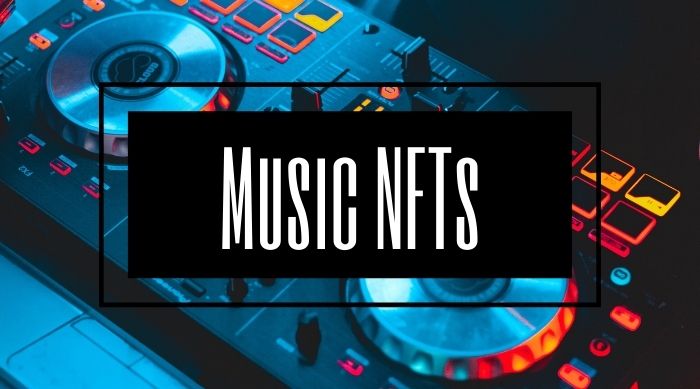It was bound to happen eventually…music NFT projects are making headlines. Ever since 2021 when the artist 3LAU auctioned more than 30 NFT versions of the artist’s album Ultraviolet, the music industry has been running to catch up. The tokens for the 3LAU record wound up earning more than $11 million. Not bad for the first album (according to Billboard.com) to be sold in this way.
Since the success of the first NFT version of a music project, other artists have gotten involved including Snoop Dogg, who first bought up his old music label Death Row Records, then announced it would be an NFT label.
How Do Music NFTs Work?

Performers can upload songs to the blockchain the same as 2-D and 3-D artwork. You can buy, sell, and exchange these NFTs in the same way you can with image files on the blockchain. The same is true for music videos, but you may find (at press time) there are far fewer of these projects.
Pundits who like the idea of music NFTs sometimes compare them to buying tracks on iTunes, saying the difference is that when you buy from iTunes you only get the right to listen to the music you have licensed from them. With music NFTs, you get ownership of the digital file the way you would have ownership of a vinyl record.
At least in theory, the logistics of music NFTs are supposed to address the complaints that people who use iTunes don’t really own the music they pay for.
iTunes Gives, iTunes Takes Away
Remember when that digital album by U2 suddenly appeared in all the playlists of iTunes users, and the huge outcry of complaints that followed? What about the people who complain about music simply disappearing from their iTunes accounts due to lapsed subscriptions, copyright issues, or other problems?
The music provider adding to or taking away from your account is a major bone of contention for some users. NFT music would seem to address such issues, but one thing buyers should know–you aren’t purchasing derivative rights with music the way some NFT projects permit for artwork.
You get to own your digital file and play it whenever you want but you likely cannot spin off your own creative projects unless the project terms specifically address derivative works.
To be sure, some enterprising artist may offer you those rights, but the way the music industry has traditionally worked, performers tend to jealously guard those rights and for good reason. Musicians simply don’t earn what they are worth in the best of times, and music rights are one important potential revenue stream.
NFT Music Marketplaces
Who in the crypto community is setting themselves up to be the blockchain equivalent of iTunes? There’s likely no project that could offer the massive number of artists and songs offered there. But for up-and-coming entrepreneurs, focusing on the much smaller pool of musicians who are into NFTs could bring a great deal of profit if current trends are any indication.
Who is selling music NFTs?
- OpenSea
- Sandmilk
- Catalog
- Sound.xyz
- FormFunction
- Arpeggi
- Groovetime
- Beat Foundry
There are apps that allow you to listen and create music on some platforms, such as Audius, which operates like any streaming app including the ability to “heart” songs. Audius, which some sources say began in 2018 with a multi-million dollar startup fund, allows you to make playlists, publish them, and earn tokens for the most popular lists.
This is just one example, many more of these platforms may arise in the crypto space as the concept catches on. Audius competitors include Grammofy, Eddy Cloud Music, and Muzie.
Joe Wallace has covered real estate and financial topics, including crypto and NFTs since 1995. His work has appeared on Veteran.com, The Pentagon Channel, ABC and many print and online publications. Joe is a 13-year veteran of the United States Air Force and a former reporter for Air Force Television News.


